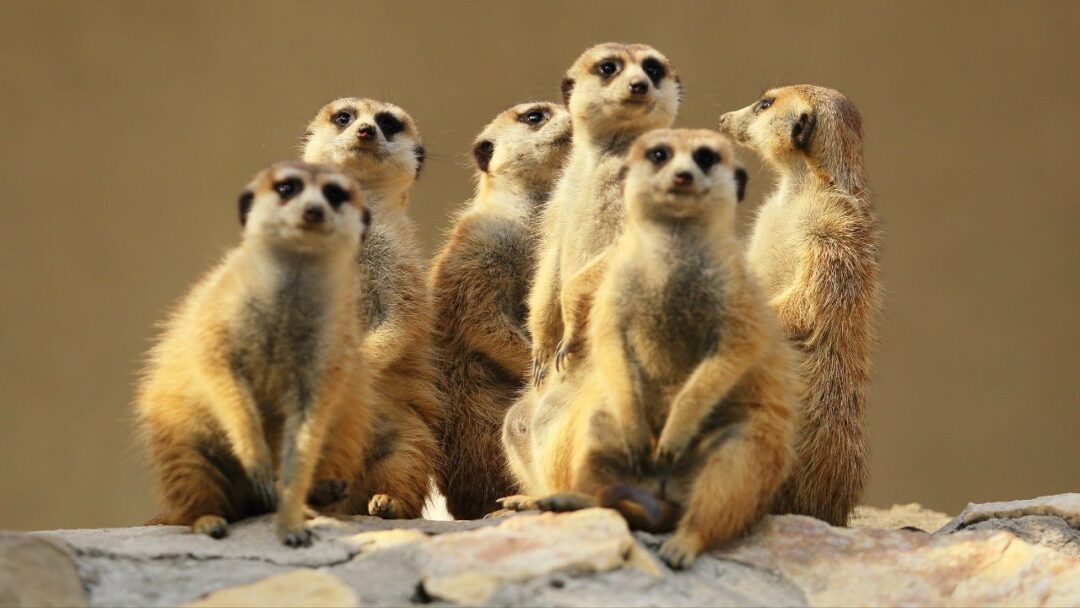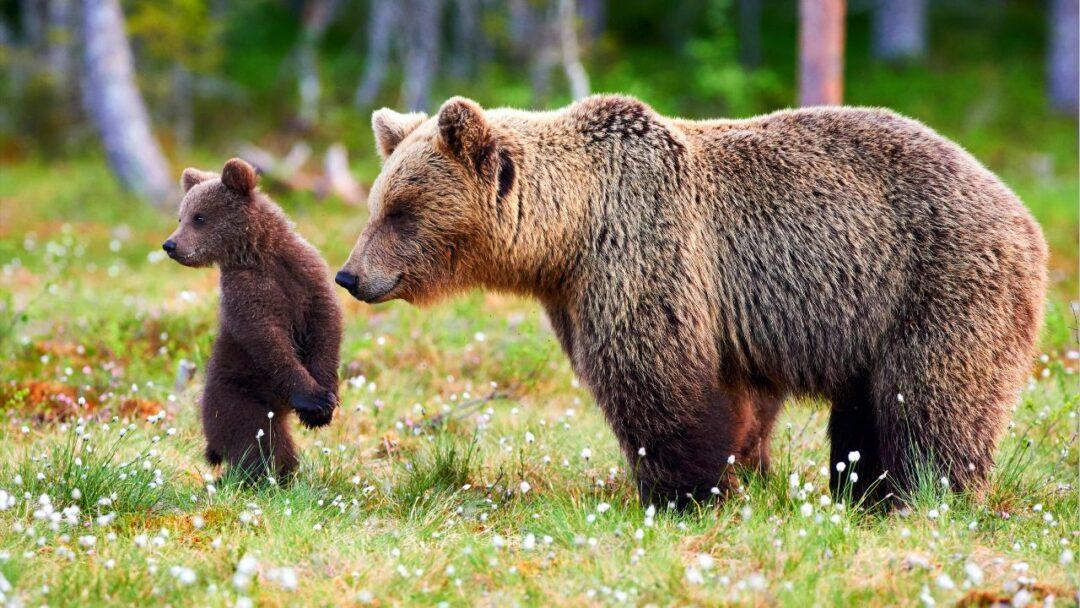Table of Contents

Introduction
Enter the enthralling world of Meerkats, the cute and highly sociable creatures that have captured our hearts. In this post, we’ll delve into the enchanted world of meerkats and learn ten amazing facts about these small but mighty mongoose relatives. Prepare to be astounded by these extraordinary critters, from their numerous species to their strange habits and critical role in the ecology.
10 Fascinating Facts About Meerkats
- Meerkats belong to the mongoose family: Meerkats are small mammals that belong to the Herpestidae family, which also includes mongooses. There are three recognized species of meerkats: the Suricata suricatta, Suricata major, and Suricata coronatus.
- Highly social creatures: Meerkats are incredibly social animals that live in groups known as mobs or gangs. These groups typically consist of 20 to 50 individuals and are led by an alpha pair. Living in such close-knit communities allows them to work together for survival.
- Impeccable teamwork: Meerkats exhibit extraordinary teamwork, which is vital for their survival. They take turns acting as sentinels, keeping a watchful eye for potential threats while the rest of the group forages for food.
- Fascinating vocalizations: Meerkats communicate using a wide range of vocalizations, including barks, chirps, growls, and purrs. Each sound carries a distinct meaning, enabling them to convey various messages to their group members.
- Unique feeding habits: Meerkats are omnivorous, with their diet consisting of insects, small vertebrates, fruit, and plant matter. They have a specialized technique of shaking their prey vigorously to remove dirt or venom before consumption.
- Digging enthusiasts: Meerkats are exceptional diggers and create intricate burrow systems known as meerkat mansions. These burrows offer protection from predators and provide a safe haven for sleeping, breeding, and escaping extreme temperatures.
- Mysterious sunbathing rituals: Meerkats have a peculiar behavior of sunbathing, which involves standing upright on their hind legs, facing the sun. While the exact reason behind this behavior is not fully understood, it is believed to help regulate their body temperature and maintain vitamin D levels.
- Cooperative breeding: Meerkats have a cooperative breeding system, where other members of the group help raise the alpha pair’s offspring. These “babysitters” assist with feeding, grooming, and protecting the young, allowing the parents to focus on other tasks.
- Meerkat mythology and symbolism: In certain African cultures, meerkats are revered for their bravery and teamwork, often seen as symbols of unity and community. They are also associated with wisdom and are believed to possess supernatural powers.
- Conservation concerns: Meerkats face threats such as habitat loss, predation, and diseases. Conservation efforts are crucial to safeguard their populations and the ecosystems they inhabit.
Mysterious Facts and Myths
Meerkats have not only captured our curiosity, but they have also generated intriguing stories and folklore. Here are some intriguing facts and myths about meerkats:
- Meerkats were thought to have the ability to ward off evil spirits and provide good fortune in some old African tales.
- It’s a common misconception that meerkats can anticipate rain by standing on their hind legs and looking up at the sky.
Importance to Ecosystem
Meerkats perform an important function in their environment. Their burrowing actions improve soil aeration, which aids plant growth. Furthermore, their eating habits reduce bug populations, assisting in the maintenance of a healthy ecosystem.
What are meerkats?
Meerkats are small mammal species belonging to the mongoose family. They are native to parts of southern Africa, known for their distinctive appearance and social behavior.
How big do meerkats grow?
Meerkats typically grow to be around 25 to 35 centimeters (10 to 14 inches) in length, with an additional tail length of about 17 to 25 centimeters (7 to 10 inches). They weigh between 0.6 to 1 kilogram (1.3 to 2.2 pounds) on average.
What do meerkats eat?
Meerkats eat a variety of foods and have an omnivorous diet. Their primary food source is insects such as beetles, spiders, and scorpions. They also eat small reptiles and birds, as well as eggs, fruits, and seeds.
How long do meerkats live?
Meerkats live in the wild for an average of 8 to 10 years. However, given proper care and a suitable environment, they can live for 12 to 14 years or even longer in captivity.
Are meerkats social animals?
Yes, meerkats are highly social animals with a complicated social structure. They live in groups called “mobs” or “clans” that can range from 20 to 50 people. They cooperate, take turns on lookout duty, and work together to hunt and protect their territory within these groups.
Where do meerkats make their homes?
Meerkats dig elaborate burrow systems in the ground, frequently in areas with loose soil or sand. These burrows protect the animals from predators and harsh weather. They have numerous entrances, tunnels, and chambers that serve different functions within the meerkat community.
Do meerkats have any predators?
Yes, in their natural habitat, meerkats have several natural predators, including birds of prey such as eagles and hawks, as well as carnivorous mammals such as jackals and snakes. Meerkat groups defend against these threats by alerting one another using their keen sense of sight and alarm calls.
Do meerkats make any sounds or communicate with each other?
Meerkats communicate using a wide range of vocalizations. They use various calls to warn others of potential dangers, signal food availability, and coordinate group activities. In addition to vocalizations, they communicate through body language and scent marking.
Are meerkats endangered?
Meerkats are not currently listed as an endangered species. They are found throughout southern Africa and are relatively abundant in many areas. They do, however, face threats such as habitat loss, human encroachment, and predation, which can have an impact on their populations in certain areas.
Can meerkats be kept as pets?
Meerkats are wild animals with unique needs that are difficult to meet in a domestic environment. It is illegal in many countries to keep meerkats as pets without the proper permits or licenses. Rather than attempting to keep them as pets, it is important to respect their natural habitat and support conservation efforts.
Conclusion
Meerkats are endearing creatures with a plethora of appealing characteristics. These small mammals continue to intrigue us, from their social structure and extraordinary collaboration to their unusual feeding habits and intriguing sunbathing rituals. We can secure the protection of these unique species for future generations by knowing their importance in the ecosystem and enjoying their cryptic character.
10 Fascinating Facts About Raccoon : NEXT POST



